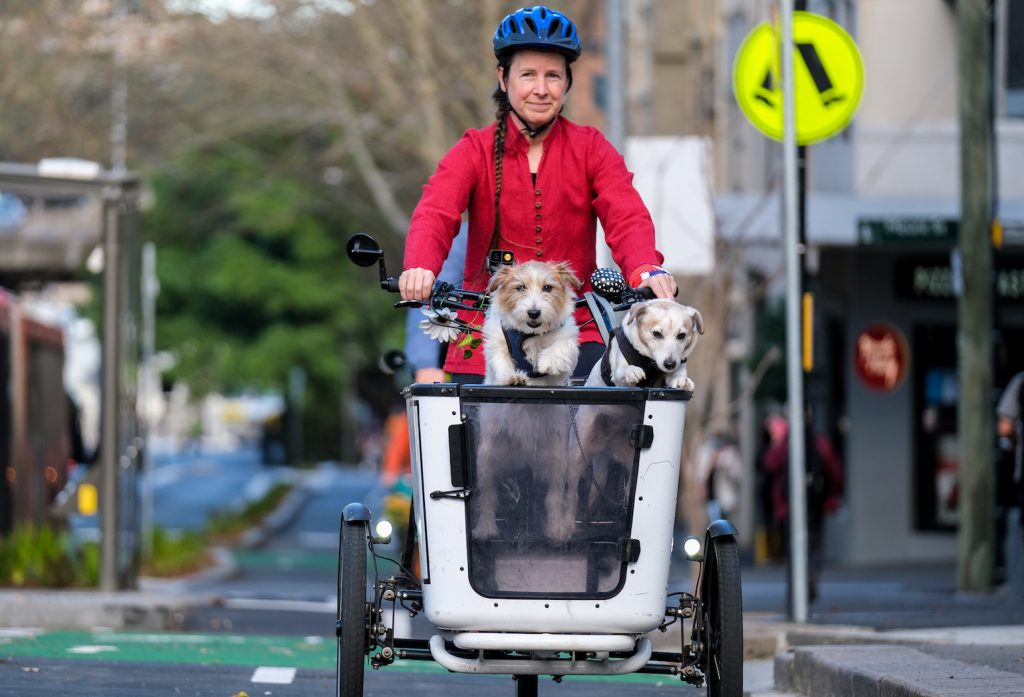Cycleways can reduce emissions in cities and improve the health of their inhabitants, but first someone has to design them correctly.
In some cities it’s common to see cycleways that confuse both bike riders and drivers. Whether it’s on-road lanes filled with parked cars or split pedestrian-bike paths with paint colour schemes that change from one suburb to the next, the location and presentation of cycleways can be chaotic. This is both a political and design issue.
In NSW, these issues are nearing an inflection point. Minister for Active Transport Rob Stokes announced early this year the government’s intention to double the $950 million budget assigned to footpaths, cycleways and other active transport infrastructure. Since the money will be allocated at the local level, the actual implementation has to be fulfilled by engineers trained in cycleway design and hired by local councils. There’s a problem with that.
“It’s really well recognised that there is a skills gap in this area that needs to be addressed,” says Stuart Khan FIEAust, Director at UNSW’s Australian Graduate School of Engineering (AGSE).
“The NSW Government are putting forward a lot of funding to build the essential infrastructure, but that funding must be matched with the technical skills required to properly design and build the right infrastructure.”
Given AGSE’s charter is to address industry demands, this makes ‘Active Transport’ a perfect first course offering. Khan will be joined by Stokes at an Engineers Australia webinar on 14 June that will discuss the skills gap and the course, Thought Leaders Series: The future of Active Transport in NSW.
Also at the webinar will be Fiona Campbell, the City of Sydney Manager of Cycling Strategy since 2008, and Dick van den Dool, Director of Barros van den Dool Active Transport. Together they have nearly half a century of experience in active transport, on the administrative and research and design side respectively.
Addressing the future
The initial idea for the course came from discussions Khan had with the City of Sydney, which has spent over half a decade perfecting its approach – including navigating through a political backlash where cycleways became talk-radio fodder.
“They were starting to see other Local Government Areas make all the same early mistakes they made, and learn the same lessons the hard way. And that actually matters to them because cycleway networks need to join up and they need to make sense,” says Khan.
One of the aims for the course is to give engineers techniques for meeting local preferences.
“You can optimise cycleway design that has a reduced impact on available parking spaces, for example,” he says. “Network designing is part of this course – really planning so that the network takes you from somewhere useful to somewhere useful.”
When it’s up and running, the course will teach engineers how to do everything from navigate legislation and policy frameworks to handling project management and inclusivity concerns.
Course structure
The course will be project-based and delivered over a seven week timeframe with a two-day immersive experience in the middle that includes site visits. By the end, the plan is for participants to have a detailed knowledge of designing separated cycleways.
Engineers will learn a range of skills, including how to manage conflicting user expectations, how to identify and resolve problems, and how to design with minimal interruption.
“How you deal with intersections is also crucial,” says Khan. “Part of this is traffic signalling. Do you need traffic signals where cyclists can push a button for access? And how does that work for T-intersections versus cross intersections, for example?”
Given the state’s push for Active Transport, Khan says the course couldn’t have come at a better time for engineers looking for new opportunities.
“This is why it’s our first course, it had a lot of momentum from the start and everyone is keen to see it happen.”
To find out more about the course sign up for the upcoming webinar with Rob Stokes, or visit the AGSE website.

